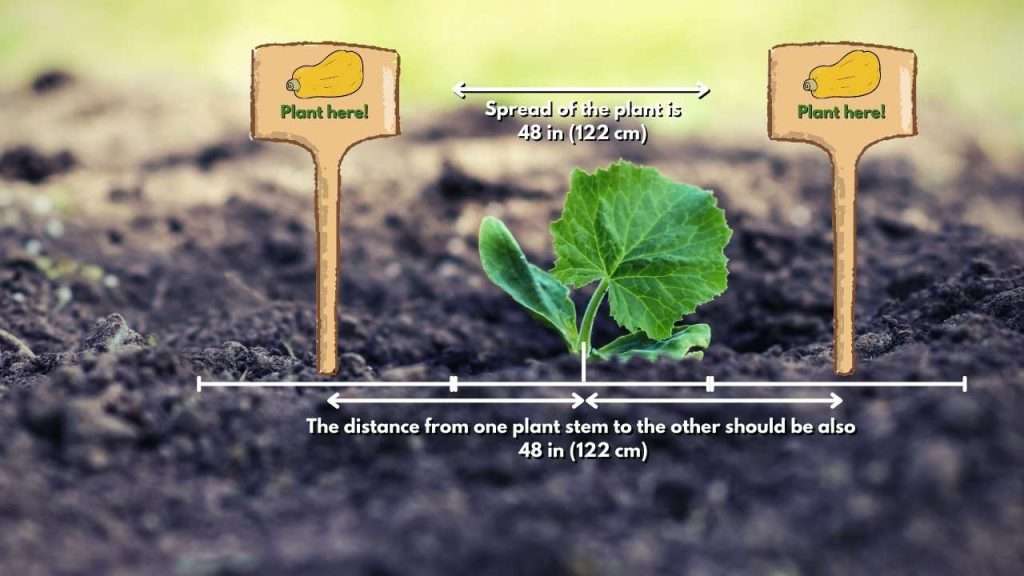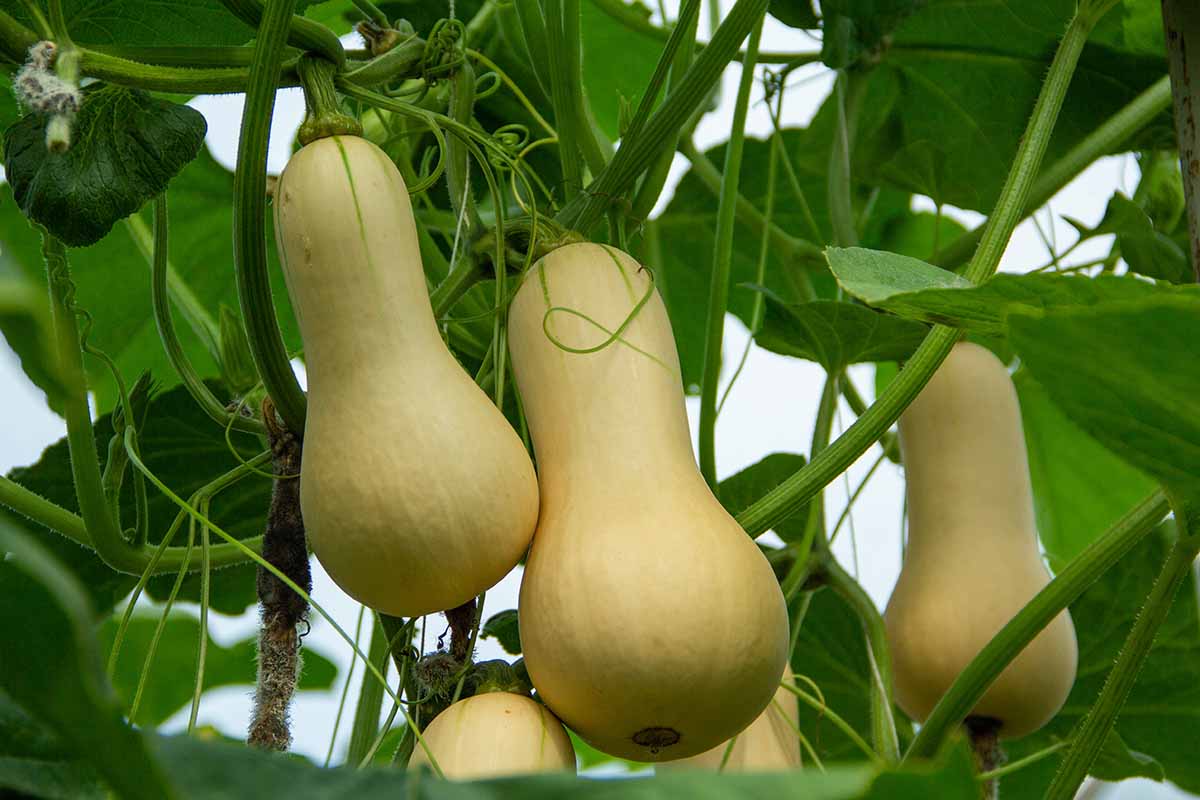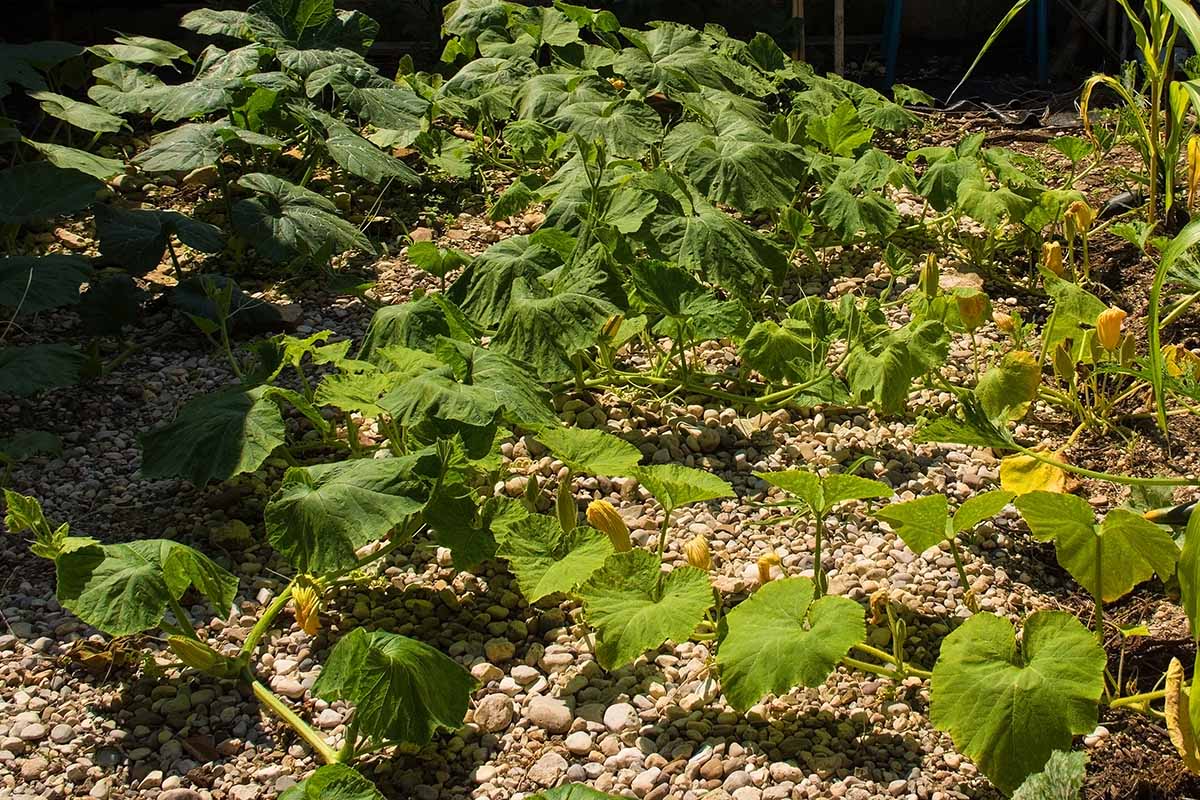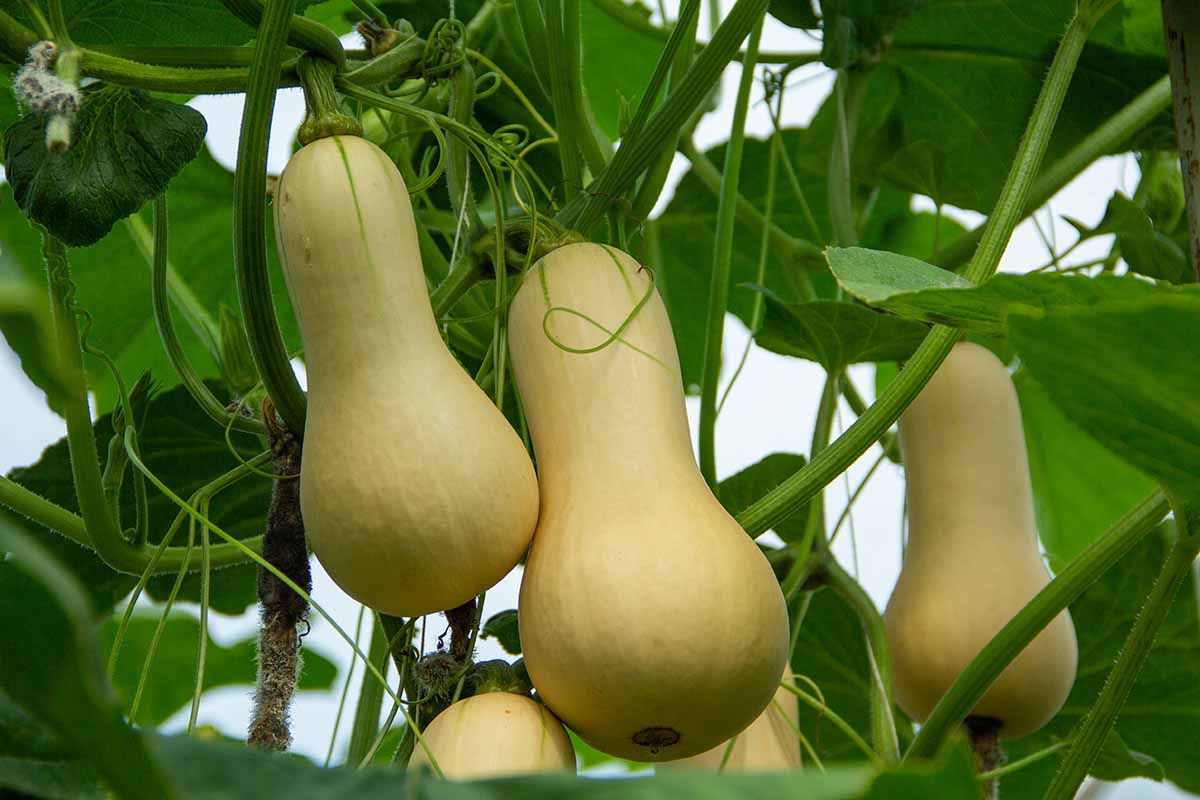Butternut squash is a delicious and nutritious vegetable that is known for its distinct flavor and versatile uses in various recipes. One important factor to consider when growing butternut squash is the planting distance. The right spacing between each plant is crucial to ensure optimal growth and maximum yield. In this article, we will explore the ideal planting distance for butternut squash, providing you with valuable insights and tips to cultivate a thriving and abundant crop in your garden. So, let’s get started and discover the perfect spacing for these delectable squash plants.

Spacing Requirements for Butternut Squash
Optimal Planting Distance for Butternut Squash
When it comes to planting butternut squash, determining the optimal spacing is crucial for the health and productivity of your plants. With proper spacing, you can ensure that each plant has enough room to grow, receive adequate sunlight and air circulation, and minimize the risk of diseases and pest problems. In this article, we will explore the considerations and factors affecting plant spacing, recommended spacing guidelines, as well as the benefits of proper plant spacing.
Considerations for Planting Distance
Before diving into the specific spacing guidelines, there are a few considerations you need to take into account when deciding how far apart to plant your butternut squash. These considerations include the variety of butternut squash you’re planting, the growth habit of the plant, any support systems you may use, and the available garden space and layout.
Factors Affecting Plant Spacing
Several factors can influence the spacing requirements for butternut squash. Firstly, the variety of butternut squash plays a role in determining how much space each plant needs. Some varieties are more compact, while others are vining and require more room to sprawl. Secondly, the growth habit of the plant is important to consider. Determining whether the plant is a bush type or a vine type can help you understand how much area the plant will cover. Additionally, if you plan to provide support systems such as trellises or cages, this can impact the spacing requirements. Lastly, the overall garden space and layout need to be taken into account, as you want to ensure each plant has enough room to flourish without overcrowding neighboring plants.
Importance of Proper Planting Distance
Why is proper planting distance so important when it comes to butternut squash? Well, there are a few key reasons. Firstly, adequate spacing allows for better air circulation between the plants, reducing the risk of fungal diseases. It also ensures that each plant receives sufficient sunlight exposure, promoting healthy growth and fruit development. Moreover, proper spacing allows for optimal nutrient and water allocation to each plant, preventing competition and ensuring that they receive the necessary resources for robust growth. Lastly, by maintaining proper spacing, you can minimize the chances of disease and pest problems, as overcrowding can create a favorable environment for pests and the spread of diseases.
Determining Optimal Planting Distance
1. Variety of Butternut Squash
The variety of butternut squash you choose to plant will have a direct impact on the optimal planting distance. Compact varieties, such as Waltham Butternut, require less space compared to vining varieties like Butterscotch. Compact varieties can be spaced around 2-3 feet apart, while vining varieties need a spacing of 4-6 feet between plants.
2. Growth Habit of Butternut Squash
Understanding the growth habit of your butternut squash plants is essential for determining their spacing requirements. Bush varieties tend to have a more compact habit and can be planted closer together, typically 2-3 feet apart in rows that are 3-4 feet apart. On the other hand, vining varieties require more space to spread their runners. It’s recommended to give them a spacing of around 4-6 feet, with rows that are 6-8 feet apart.
3. Support Systems
Using support systems like trellises, cages, or stakes can help maximize space and improve air circulation for your butternut squash plants. When using these systems, you can plant your butternut squash plants closer together, as the support structure will help them grow vertically instead of sprawling. With support systems in place, a spacing of 2-3 feet between compact varieties and 3-4 feet between vining varieties is usually sufficient.
4. Garden Space and Layout
The available garden space and layout will also influence the planting distance of your butternut squash. If your garden has limited space, you may need to adjust the spacing accordingly, allowing for at least 2-3 feet between compact varieties and 4-6 feet between vining varieties. Consider the overall layout of your garden and allow enough space for proper growth and easy maintenance.

Recommended Spacing Guidelines
1. Hill System
One popular spacing technique for butternut squash is the hill system. In this method, form mounds of soil that are around 8-12 inches high, with a diameter of 2-3 feet. Plant 2-3 seeds per hill, spaced evenly within the mound. Once the seeds germinate and seedlings establish, thin them, leaving the healthiest plant in each mound. Space the hills approximately 4-6 feet apart to accommodate the spreading habit of the vining varieties.
2. Square Foot Gardening
Square foot gardening is another efficient way to make the most of limited garden space. In this method, create a grid of 1-foot squares and plant a single butternut squash plant in each square. For compact varieties, this spacing technique is suitable if you have enough space within each square for the plant to grow and spread. For vining varieties, it is recommended to have 2-3 squares between each plant to allow for their runner’s growth.
3. Rows and In-Row Spacing
Another traditional method for planting butternut squash is using rows and in-row spacing. In this technique, create rows that are 3-4 feet apart for bush varieties and 6-8 feet apart for vining varieties. Within each row, space the plants 2-3 feet apart for compact varieties and 4-6 feet apart for vining varieties. This method ensures proper air circulation between plants and makes maintenance tasks like watering and harvesting more manageable.
Spacing Techniques and Considerations
1. Hill System Spacing
The hill system is beneficial for butternut squash, especially vining varieties. By planting multiple seeds in a mound and thinning them out later, you can ensure that the strongest seedlings prevail and provide enough space for their runners to sprawl. Remember to space the hills 4-6 feet apart to give each mound ample room for expansion and avoid overcrowding.
2. Square Foot Gardening Spacing
Square foot gardening is ideal for small gardens or those who want to maximize space. Planting a single butternut squash plant per square foot ensures adequate room for growth and easy maintenance. However, keep in mind that both compact and vining varieties may require additional space surrounding each plant to accommodate their growth habits.
3. Rows and In-Row Spacing Techniques
Using rows and in-row spacing is a traditional method that allows for efficient use of space and facilitates garden maintenance. By spacing the plants adequately within each row and leaving room between rows, you create an organized layout that promotes better air circulation and ease of access. Adjust the spacing based on the growth habit of your butternut squash plants, allowing ample space for their spreading vine or bushy nature.

Benefits of Proper Plant Spacing
1. Better Air Circulation and Sunlight Exposure
Maintaining proper plant spacing ensures that each butternut squash plant receives sufficient air circulation and sunlight exposure. This promotes healthier growth, reduces the risk of fungal diseases, and enhances fruit development. Good air circulation can also minimize humidity around the plants, further preventing disease problems.
2. Optimal Nutrient and Water Allocation
Ensuring adequate spacing between butternut squash plants helps prevent competition for nutrients and water. Each plant can access enough resources without being overshadowed or deprived by neighboring plants. This optimal allocation of nutrients and water promotes robust growth, higher yields, and overall plant health.
3. Minimizing Disease and Pest Problems
Proper plant spacing plays a crucial role in minimizing disease and pest problems. Overcrowding can create a favorable environment for diseases to take hold and spread rapidly. By maintaining appropriate spacing, you provide better airflow and reduce the chances of pests and diseases infesting your butternut squash plants. This reduces the need for chemical interventions and promotes a healthier and more sustainable garden ecosystem.
Common Planting Mistakes to Avoid
1. Overcrowding
One of the most common mistakes when planting butternut squash is overcrowding. Plants that are too close together can compete for resources, block air circulation, and increase the risk of diseases. Avoid the temptation to plant too many plants in a limited space and give each plant enough room to thrive.
2. Insufficient Spacing
On the other hand, insufficient spacing can also cause problems. If you don’t provide enough room for the growth habits of your butternut squash, they may become cramped, limiting their potential and making maintenance tasks challenging. Adequate spacing is essential to allow for proper growth and facilitate gardening tasks such as watering and harvesting.
3. Neglecting Support Systems
For vining varieties of butternut squash, neglecting support systems can lead to tangled and sprawling plants, taking up more space than necessary. Using trellises, cages, or stakes is not only beneficial for maximizing space but also promotes better air circulation, easier maintenance, and cleaner fruits. Don’t forget to plan and implement support systems if needed for your vining varieties.

Conclusion and Final Tips
Importance of Following Plant Spacing Guidelines
Proper spacing is a key factor in ensuring the success of your butternut squash plants. By providing enough room for growth, adequate sunlight exposure, and optimal resource allocation, you can promote healthier plants and increase their productivity. Following the recommended spacing guidelines according to the variety, growth habit, and support system will help you create an ideal environment for your butternut squash plants.
Adapting Planting Distance to Your Specific Garden
While specific spacing guidelines are provided, it’s important to consider your specific garden space and layout. Adapting the planting distance to suit your available space will allow for better plant growth, easier maintenance, and an organized garden layout. Don’t hesitate to adjust the spacing slightly to accommodate the unique characteristics of your garden.
Monitoring and Adjusting Spacing if Necessary
After planting your butternut squash, regularly monitor their growth and make adjustments if necessary. As the plants develop, ensure that they have enough room to spread or grow vertically, and thin out any overcrowded areas. By actively observing your plants’ progress, you can adapt and optimize their spacing for the best results.
In summary, proper spacing is essential for successful butternut squash cultivation. By considering the variety, growth habit, support systems, and your garden space, you can determine the optimal planting distance. Following recommended spacing guidelines, such as the hill system, square foot gardening, or rows and in-row spacing techniques, will help maximize plant health and productivity. By providing better air circulation, sunlight exposure, and minimizing disease and pest pressure, proper spacing sets the foundation for a thriving butternut squash garden.



